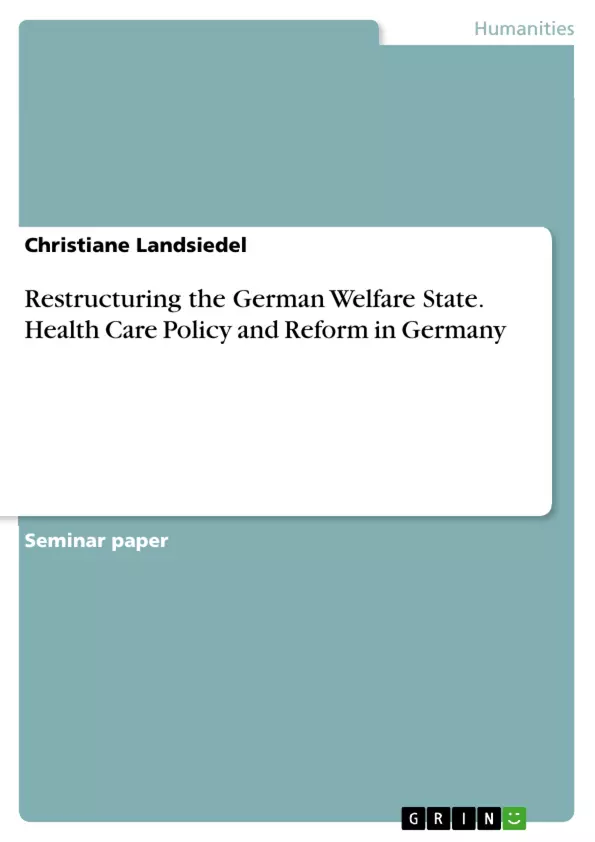As health care is among the most personal issues, this is one reason why it is also among the most politically discussed as cost containment has become a priority of health care policy. Health care has consumed a large and growing portion of social spending in all advanced industrialised societies, particularly in the last decade. This cost explosion coincided with the global economic slowdown and worries about the fiscal viability of the welfare state. Reasons for escalating health care costs are, although to varying degrees, common to Western countries.
The health care sector provides fertile ground for technological innovations that may prolong life but at considerable expense. Moreover, once these discoveries are made, it is extremely difficult for insurers or governments to limit their provision, as patients demand access to these treatments. Furthermore, the aging population of Western countries has direct consequences for health care because older persons are more likely to be in need of cost intensive treatment and/or care due to acute illness or chronic conditions.
At the same time, birth rates are no longer balanced with increasing longevity, so that there will be fewer working age persons in the future to bear the financial requirements for elderly care. Governments and employers claimed that health care costs posed immediate and longterm problems and began to search for ways to address them. The ‘new politics of the welfare state’ – Pierson’s (1996) famous concept, which deals with welfare state reform in the face of changing demographic and tougher economic conditions – has also modified the position of diverse welfare state stakeholders.
The actions and preferences of payers and the state are determined by the prevailing health care system as well as by the political system and whether it provides them an opportunity to influence health policies.
Inhaltsverzeichnis (Table of Contents)
- Introduction
- 1. Actors within the Health Care System
- 2. The Restructuring Process: The Politics of Health Care Reform
- 2.1 Reforms During the Past Decade
- 2.2 The Politics of the New Government
- 2.3 Evaluation
- 3. Concluding Remarks
Zielsetzung und Themenschwerpunkte (Objectives and Key Themes)
This paper explores the restructuring of the German welfare state, specifically focusing on health care policy and reform. The study aims to analyze the opportunities and constraints faced by actors within the health care system, particularly employers and employees, in pursuing cost containment strategies. It also examines the impact of the system's structure on the development of reform solutions.
- The role of actors (employers, employees, and government) in health care reform
- The influence of the health care system structure on reform strategies
- The impact of cost containment measures on the German welfare state
- The balance between cost containment and equity in health care provision
- The relationship between economic competitiveness and the welfare state
Zusammenfassung der Kapitel (Chapter Summaries)
The introduction discusses the increasing costs of health care in advanced industrialized societies and the impact of the "new politics of the welfare state" on cost containment strategies. It sets the stage for analyzing the German health care system in the context of these broader trends.
Chapter 1 explores the actors within the German health care system, focusing on the role of employers and employees in financing and administration. It highlights the countervailing power inherent in the system's design, which limits the ability of the state or employers to implement one-sided cost containment measures. The chapter also discusses the concept of social citizenship and the German model of universal health care.
Chapter 2 delves into the restructuring process of German health care reform, examining the political context and the various reform initiatives undertaken over the past decade. It explores the impact of economic recession and the need for cost containment on health care policy. The chapter also discusses the different types of reforms, including structural reforms and programmatic reforms.
Schlüsselwörter (Keywords)
This work examines the German welfare state, health care policy, cost containment, actors within the health care system, employers, employees, government, structural reforms, equity, social citizenship, and economic competitiveness.
- Citar trabajo
- Christiane Landsiedel (Autor), 2005, Restructuring the German Welfare State. Health Care Policy and Reform in Germany, Múnich, GRIN Verlag, https://www.grin.com/document/36704



